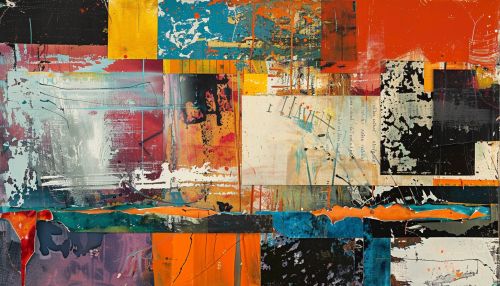Modernist poetry
Introduction
Modernist poetry is a genre of poetry that emerged in the late 19th and early 20th centuries as a reaction to the perceived excesses and constraints of traditional forms and themes. This movement sought to break away from established conventions and explore new ways of expression, often characterized by a focus on fragmentation, free verse, and a departure from linear narrative structures. Modernist poets aimed to capture the complexities of modern life and the fragmented nature of human experience.
Historical Context
The roots of modernist poetry can be traced back to the late 19th century, a period marked by rapid industrialization, urbanization, and significant social and political changes. The disillusionment with Victorian ideals and the horrors of World War I further fueled the desire for a new poetic form that could more accurately reflect the tumultuous reality of the time. Influences from Symbolism, Imagism, and other avant-garde movements played a crucial role in shaping modernist poetry.
Key Characteristics
Modernist poetry is characterized by several distinct features:
Fragmentation
Modernist poets often employed fragmentation in their work, breaking away from traditional narrative structures and linear progression. This technique reflects the chaotic and fragmented nature of modern life, as seen in T.S. Eliot's The Waste Land.
Free Verse
Free verse became a hallmark of modernist poetry, allowing poets to break free from the constraints of meter and rhyme. This form provided greater flexibility and freedom of expression, as demonstrated in the works of Ezra Pound and William Carlos Williams.
Imagery
The use of vivid and precise imagery is another defining characteristic of modernist poetry. Poets like H.D. (Hilda Doolittle) and Wallace Stevens employed striking visual images to convey complex emotions and ideas.
Allusion
Modernist poets frequently used allusions to classical literature, mythology, and other cultural references to add depth and complexity to their work. This technique is evident in Eliot's The Love Song of J. Alfred Prufrock.
Experimentation
Modernist poets were known for their experimental approach to language and form. They often played with syntax, punctuation, and typography to create new and innovative poetic structures.
Major Figures
Several poets are considered central to the modernist movement:
T.S. Eliot
T.S. Eliot is one of the most influential modernist poets, known for his works The Waste Land and Four Quartets. His poetry often explores themes of disillusionment, fragmentation, and spiritual desolation.
Ezra Pound
Ezra Pound was a key figure in the development of modernist poetry, particularly through his promotion of Imagism. His work, including The Cantos, is characterized by its use of precise imagery and innovative form.
Wallace Stevens
Wallace Stevens is known for his philosophical and abstract poetry, which often explores the relationship between reality and imagination. His notable works include Harmonium and The Auroras of Autumn.
H.D. (Hilda Doolittle)
H.D. was a prominent Imagist poet whose work is marked by its use of vivid imagery and classical allusions. Her notable works include Sea Garden and Helen in Egypt.
William Carlos Williams
William Carlos Williams is known for his use of everyday language and imagery to capture the essence of American life. His notable works include Spring and All and Paterson.
Influence and Legacy
Modernist poetry has had a profound impact on subsequent literary movements and continues to influence contemporary poets. Its emphasis on experimentation, fragmentation, and free verse paved the way for later movements such as Postmodernism and Confessional poetry.
See Also
- Symbolism (arts)
- Imagism
- Postmodernism
- Confessional poetry
- The Waste Land
- The Love Song of J. Alfred Prufrock


